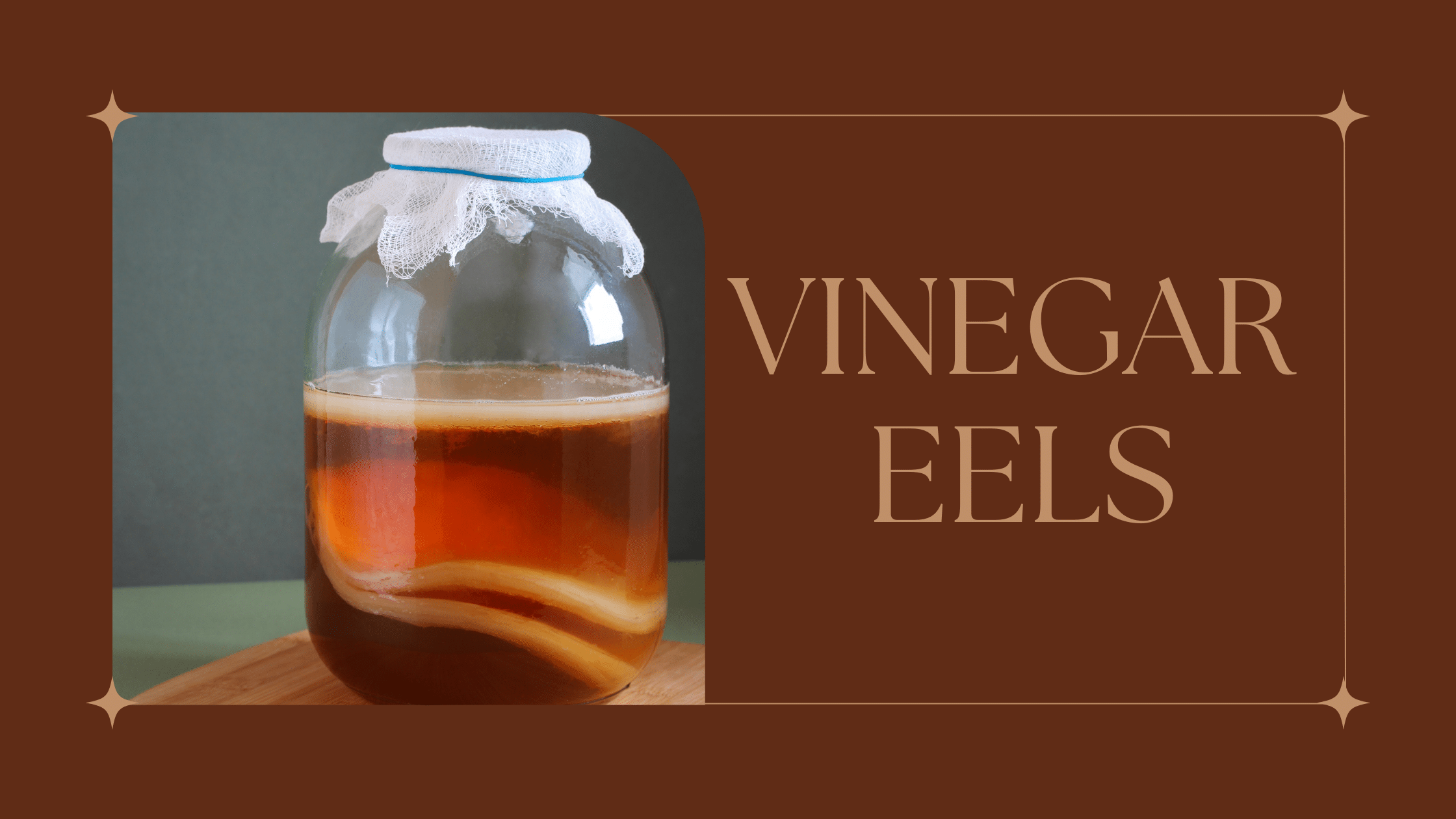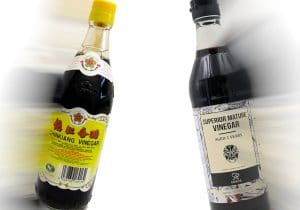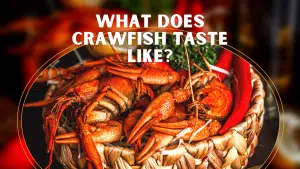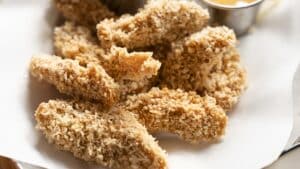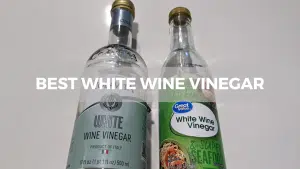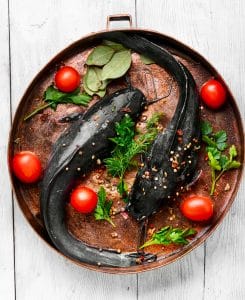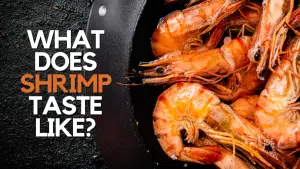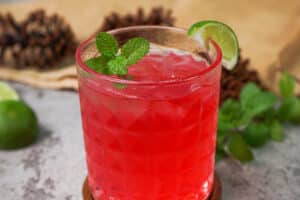What Are Vinegar Eels?
Important Note: When you buy through our links, we may earn a commission. As an Amazon Associate we earn from qualifying purchases. Content, pricing, offers and availability are subject to change at any time - more info.
If you like to make your own vinegar or ferment kombucha, chances are you’ve heard of or maybe even seen vinegar eels, tiny creatures which like to live in a vinegary environment. These minuscule worms are not the latest seafood fad, nor are they eels at all. What are vinegar eels?
Vinegar eels are roundworms or nematodes found in raw, unpasteurized vinegar. They are non-parasitic, harmless to humans, and make nutritious fish food. They are a blight to the vinegar industry and can be a problem for kombucha brewers, as vinegar eels consume SCOBY.
Unless you are making fermented foods or pickles, it is unlikely that you will come across vinegar eels. However, if you are interested in vinegar and unpasteurized foods, it’s helpful to learn about these unusual organisms.
- What Are Vinegar Eels?
- Are Vinegar Eels Harmful To Humans?
- Vinegar Eels & Vinegar Making
- Vinegar Eels & Kombucha Brewing
- Did You Use Vinegar While Making Kombucha?
- Was Your SCOBY Contaminated?
- How Do You Know If There Are Vinegar Eels In Your Kombucha?
- What To Do If You Find Vinegar Eels In Your Kombucha
- How To Prevent Vinegar Eels in Kombucha
- All About Vinegar Eels
What Are Vinegar Eels?
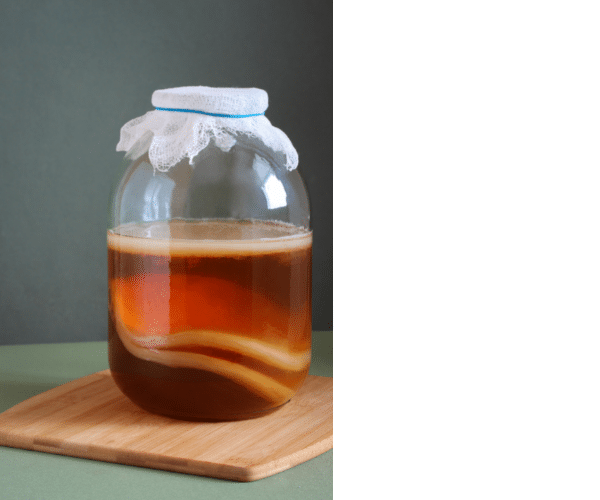
Vinegar eels are not eels or any kind of fish. They are roundworms or nematodes belonging to the species Turbatrix aceti or Anguillula aceti.
Nematodes are just about visible to the naked eye, around 1/16 of an inch or 2 mm long, and look like tiny, transparent worms.
They are exceptionally tolerant of and thrive in both extremely acid and alkaline environments, so it is common to find them in raw, unpasteurized, and unfiltered vinegar.
Vinegar eels are not parasites — they are free-living nematodes that live off the microbes in vinegar. You can find infestations of these creatures clumped together near the surface of the liquid, where they have access to oxygen and nutrients.
Nematodes do not lay eggs. Instead, females give birth to live young – up to 45 babies every six to 10 days. Vinegar eels can live for around ten months. This rapid reproduction rate indicates how quickly a vinegar eel infestation can develop.
Although not desirable in foodstuffs, vinegar eels make excellent fish food, and many people successfully breed vinegar eels for this purpose.
- What Are Vinegar Eels?
- Are Vinegar Eels Harmful To Humans?
- Vinegar Eels & Vinegar Making
- Vinegar Eels & Kombucha Brewing
- Did You Use Vinegar While Making Kombucha?
- Was Your SCOBY Contaminated?
- How Do You Know If There Are Vinegar Eels In Your Kombucha?
- What To Do If You Find Vinegar Eels In Your Kombucha
- How To Prevent Vinegar Eels in Kombucha
- All About Vinegar Eels
Are Vinegar Eels Harmful To Humans?
Vinegar eels are harmless to humans. Unlike other nematodes like tapeworms, they are not parasitic. Your body will digest and excrete them.
Vinegar Eels & Vinegar Making
Vinegar eels (rather, vinegar nematodes) are so named because they are almost always found in vinegar-making facilities or wherever raw vinegar is left standing.
There are theories that vinegar eels are essential to the creation of vinegar.
The Role Of Vinegar Eels in Traditional Vinegar Production
To understand the role vinegar eels play in vinegar production, it is necessary to look at how traditional vinegar is produced.
You can make vinegar from any carbohydrate source high in sugar — wine, apples, grapes, malt, potatoes, etc. The chopped fruit is steeped in water.
The first step in converting fruit or vegetables to vinegar allows natural yeast to ferment the food sugars to alcohol. This process is similar to making wine or other liquor. However, with vinegar making, acetic acid bacteria or Acetobacter convert the alcohol to acetic acid.
Traditional vinegar-making processes allow the bacterial culture to grow on the surface of the liquid where it can access oxygen. Slow fermentation occurs over weeks or months.
As the vinegar ferments, a slime known as the “mother” develops, consisting of yeast and acetic acid bacteria — this is the magical element that creates vinegar.
Experts believe that vinegar eels form part of the mother and are an essential component in converting fruit or vegetables from alcohol to acetic acid. The scientific name of these nematodes includes the Latin word aceti, meaning vinegar.
It seems that while these nematodes feed on the microbial culture or mother, they change the environment around them, helping to create vinegar.
Homemade or traditionally made vinegar will often contain vinegar eels. Many homebrewers of vinegar simply filter their vinegar to remove the worms, as the worms are harmless.
The Role Of Vinegar Eels in Modern Vinegar Production
It may be that these creatures are essential to the traditional vinegar-making process, but vinegar eels are not necessary to modern vinegar production.
Commercially produced vinegar does not undergo a slow fermentation process. Instead, the liquid is oxygenated, and the bacteria are submerged, which means they do not remain on the surface to ferment the vinegar rapidly.
Nonetheless, vinegar eels do appear, even during rapid fermentation.
Vinegar eels are so endemic to vinegar producers that the US Food and Drug Administration (FDA) mentions them in regulations around the production of vinegar.
According to FDA policy, the appearance of vinegar eels in the bulk storage tanks or generators of a vinegar-making facility is not “an objectionable condition” — in other words, having vinegar eels living in vinegar factories is normal and natural and holds no risk to the consumer.
This is not to say that vinegar producers encourage vinegar eels — they are seen as a pest and a blight because the FDA regulations are also clear about vinegar eels in the finished product. Vinegar-makers are required to filter and pasteurize their vinegar so that no vinegar eels are present in the vinegar sold to the public. Many vinegar producers use sulfur dioxide to destroy the vinegar eels.
According to the FDA, finding vinegar eels in commercially available vinegar is “objectionable,” and the vinegar is regarded as “adulterated.” There should be no vinegar eels in the vinegar you buy at stores, and it is a violation of FDA food regulations.
How Do You Know If There Are Vinegar Eels In Your Vinegar?
If you purchase raw, unpasteurized, or unfiltered vinegar or make your own vinegar, you do run the risk of finding some vinegar eels.
The easiest way to check for vinegar eels is to take your vinegar into a dark room or cupboard. Shine a flashlight through the bottle, focussing on the surface of the liquid. The eels will swim towards the light, and you will be able to see them with the naked eye.
While vinegar eels are not harmful to human beings, consuming them is still not a good idea.
Official recommendations are to discard any vinegar containing the worms immediately as other contamination may be present. However, it is your choice to filter them out and consume the vinegar.
Vinegar Eels & Kombucha Brewing
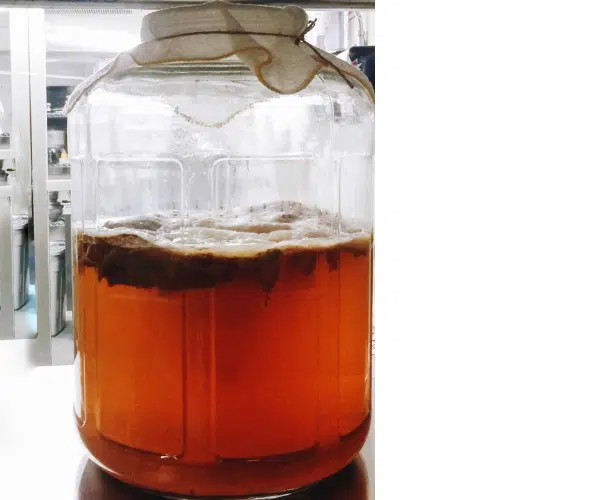
Another likely place you can encounter these tiny worms is if you’re a maker of kombucha.
Kombucha is a fermented product, like vinegar. As soon as you combine liquid and sugar and expose it to air (as you would for the brewing process), you risk a vinegary acid developing which will attract vinegar eels.
However, unlike in the vinegar-making process, vinegar eels can harm your kombucha.
Why Do Vinegar Eels Develop In Kombucha?
Kombucha is not the same as vinegar, so it may seem unlikely to be susceptible to vinegar eels. However, it is an appealing environment for vinegar eels, and there are two ways you could introduce vinegar eels into your kombucha.
Did You Use Vinegar While Making Kombucha?
The first way vinegar eels find their way into kombucha is if you accidentally – or purposefully — used raw vinegar during your brewing process. You may have used vinegar as part of your starter liquid or washed down your equipment with raw vinegar, thus introducing the nematodes.
Was Your SCOBY Contaminated?
Some SCOBY starters may already be contaminated with vinegar eels, primarily if they contain raw apple cider vinegar. To avoid using a contaminated SCOBY, always get your starter from a reputable source — many amateur brewers have passed on infested SCOBY unwittingly.
How Do You Know If There Are Vinegar Eels In Your Kombucha?
There are a few signs that your kombucha has vinegar eels in it.
You Can See The Vinegar Eels
Hold your kombucha up to the light or shine a flashlight through it to see the worms themselves. They will appear in clumps near the surface of the kombucha. The vinegar eel infestation is severe once they are visible to the naked eye.
Your SCOBY Is Damaged
The vinegar eels will eat your SCOBY, so you may notice the SCOBY wasting away, shriveling up, or taking on an abnormal shape. These are signs that you have vinegar eels feasting on the yeast culture and bacteria that make up your SCOBY, which will affect the balance between the two organisms, their healthy ability to brew, and their growth.
Your Brewing Rate Slows
If you notice your kombucha’s brewing rate slowing down, you may have an infestation of vinegar eels. As the vinegar eels destroy the SCOBY’s bacteria and yeast, their ability to function symbiotically and induce fermentation is affected. The brewing rate will slow, and your kombucha will take much longer to brew.
The PH Balance Is Upset
Another sign of vinegar eel contamination is that the PH of your kombucha becomes steadily less acidic. Fermentation naturally creates an acidic environment that the vinegar eels upset as they consume and weaken the SCOBY. For example, you may notice mold growing on the kombucha — the powerfully acid environment usually prevents mold growth.
The Kombucha Tastes Unpleasant
As the PH of the kombucha alters, so does the taste. If your kombucha develops a foul taste — and you haven’t introduced a new flavoring ingredient — the chances are that it is infested with vinegar worms.
What To Do If You Find Vinegar Eels In Your Kombucha
The problem with finding vinegar eels in your kombucha is partly that they are unpleasant and unappealing, although harmless. The problem is that vinegar eels eat your SCOBY, weakening and damaging its ability to brew kombucha.
Discard All SCOBY And Kombucha
If you find vinegar eels in your kombucha, discard all kombucha, starter liquid, and extra SCOBY.
You need not destroy the vinegar eels or kombucha. If you know someone who keeps fish, they may well be delighted with the eel-infested kombucha. Many fish enthusiasts breed vinegar eels as a source of food for their fish, especially the small fry.
It would be best to discard your kombucha because it is tough to get rid of a vinegar eel infestation without getting rid of all contaminated items. They will likely reappear if you don’t discard everything.
Vinegar eels are not dangerous for human consumption, so some brewers are not concerned by the appearance of vinegar eels and simply filter their kombucha through butter muslin or cheesecloth. Filtration is not a solution as the infestation will continue, weakening the SCOBY and impacting your brewing.
Sterilize all your equipment & containers
To get rid of any remaining vinegar worms, sterilize all your equipment by washing with regular soap, rinsing with hot water, and then rinsing with distilled white vinegar. Do not use anti-bacterial soap as this will affect the bacteria in your SCOBY.
Sterilize all mason jars by placing them in water, heating them to 212⁰F, and boiling them for 10 minutes.
How To Prevent Vinegar Eels in Kombucha
Discarding all of your kombucha and SCOBY is a radical step, so it is far better to avoid a vinegar eel infestation in the first place. Here are some guidelines:
- Get your SCOBY from a reputable supplier who never uses raw vinegar.
- Never rinse your SCOBY with tap water. Rinsing reduces the acidity of the SCOBY and makes it appealing to vinegar eels.
- Use only distilled white vinegar in kombucha recipes if you feel you must use vinegar at all. Avoid any apple cider vinegar and stay away from raw, unpasteurized, and unfiltered vinegar. Instead, use well-fermented kombucha as a starter liquid.
- Maintain an acidic environment in your kombucha by using the correct ratio of starter tea for the batch.
- Use a strongly acidic starter tea with a pH of 3.5 or under. Tea between a week and a month old should have the appropriate pH.
- Keep your brewing equipment clean and sterile. Always clean the equipment between brewing batches of kombucha.
All About Vinegar Eels
Vinegar eels are tiny nematodes that live in highly acidic and alkaline environments. Thought to play a role in traditional vinegar-making, these creatures live in raw, unpasteurized vinegar. Commercial vinegar producers remove them by pasteurization. Vinegar eels can also live in kombucha, so take steps to avoid a nematode infestation as it will destroy your SCOBY and kombucha-brewing process.
